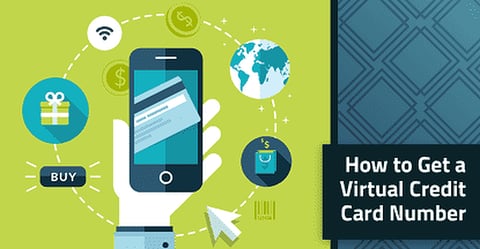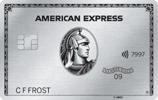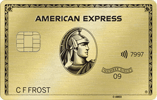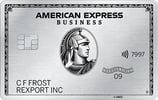While the implementation of chipped EMV credit cards has eliminated a large portion of card-present (CP) fraud, the amount of card-not-present (CNP) — read: online — credit card fraud has steadily risen over the last few years.
In an effort to combat CNP fraud, card issuers and third-party companies have developed what are called virtual credit cards.
Designed for use when shopping online, virtual credit cards are randomly generated, single-use credit card numbers that can limit an online fraudster’s access to your real financial information. This may sound like some complex bit of science fiction turned non-fiction. But you don’t need to be a tech whiz to use virtual credit cards. Keep reading for an overview of how these fraud-inhibiting card numbers work.
Issuers | Third-Party Companies | Click to Pay | FAQs
Limited Issuers Offer Virtual Credit Cards
Although virtual credit cards can be useful, they’re still somewhat of a novelty in the consumer credit card world. The popular payment processor, PayPal, was one of the original sources for virtual credit cards, but the company has long since discontinued the service.
Today, only a handful of major credit card issuers offer the ability to create virtual credit cards for online shopping: Capital One, Citibank, and American Express.
Capital One
Capital One’s virtual credit card service is available for all Capital One credit cards through Eno®, an “intelligent assistant” that helps Capital One customers with a variety of tasks. To use Eno® to create a virtual credit card number, you’ll need to be on a computer and have the Eno® extension for Google Chrome or Mozilla Firefox.
- $0 annual fee and no foreign transaction fees
- Earn a bonus of 20,000 miles once you spend $500 on purchases within 3 months from account opening, equal to $200 in travel
- Earn unlimited 1.25X miles on every purchase, every day
- Miles won't expire for the life of the account and there's no limit to how many you can earn
- Earn 5X miles on hotels and rental cars booked through Capital One Travel, where you'll get Capital One's best prices on thousands of trip options
- Use your miles to get reimbursed for any travel purchase—or redeem by booking a trip through Capital One Travel
| Intro Purchases | 0% for 15 months |
| Intro Transfers | 0% for 15 months |
| Regular APR | 19.99% - 29.99% (Variable) |
| Annual Fee | $0 |
| Credit Needed | Excellent, Good |
- Earn a one-time $200 cash bonus after you spend $500 on purchases within 3 months from account opening
- Earn unlimited 1.5% cash back on every purchase, every day
- $0 annual fee and no foreign transaction fees
- Enjoy up to 6 months of complimentary Uber One membership statement credits through 11/14/2024
- Earn unlimited 5% cash back on hotels and rental cars booked through Capital One Travel, where you'll get Capital One's best prices on thousands of trip options. Terms apply
- No rotating categories or sign-ups needed to earn cash rewards; plus, cash back won't expire for the life of the account and there's no limit to how much you can earn
| Intro Purchases | 0% for 15 months |
| Intro Transfers | 0% for 15 months |
| Regular APR | 19.99% - 29.99% (Variable) |
| Annual Fee | $0 |
| Credit Needed | Excellent, Good |
- Enjoy a one-time bonus of 75,000 miles once you spend $4,000 on purchases within 3 months from account opening, equal to $750 in travel
- Earn unlimited 2X miles on every purchase, every day
- Earn 5X miles on hotels and rental cars booked through Capital One Travel, where you'll get Capital One's best prices on thousands of trip options
- Miles won't expire for the life of the account and there's no limit to how many you can earn
- Receive up to a $100 credit for Global Entry or TSA PreCheck®
- Use your miles to get reimbursed for any travel purchase—or redeem by booking a trip through Capital One Travel
| Intro Purchases | N/A |
| Intro Transfers | N/A |
| Regular APR | 19.99% - 29.99% (Variable) |
| Annual Fee | $95 |
| Credit Needed | Excellent, Good |
Citi
Only select Citi cards are eligible for a virtual credit card number, but the process is pretty straightforward for those cards that do qualify. Simply register your Citi credit card in the program, and then you can generate a virtual credit card number through the online interface. Virtual card numbers are only good for up to 12 months.
Reports indicate the following two Citi cards provide virtual account numbers:
- Earn $200 cash back after you spend $1,500 on purchases in the first 6 months of account opening. This bonus offer will be fulfilled as 20,000 ThankYou® Points, which can be redeemed for $200 cash back.
- Earn 2% on every purchase with unlimited 1% cash back when you buy, plus an additional 1% as you pay for those purchases. To earn cash back, pay at least the minimum due on time. Plus, for a limited time, earn 5% total cash back on hotel, car rentals and attractions booked on the Citi Travel℠ portal through 12/31/24.
- Balance Transfer Only Offer: 0% intro APR on Balance Transfers for 18 months. After that, the variable APR will be 19.24% - 29.24%, based on your creditworthiness.
- Balance Transfers do not earn cash back. Intro APR does not apply to purchases.
- If you transfer a balance, interest will be charged on your purchases unless you pay your entire balance (including balance transfers) by the due date each month.
- There is an intro balance transfer fee of 3% of each transfer (minimum $5) completed within the first 4 months of account opening. After that, your fee will be 5% of each transfer (minimum $5).
| Intro Purchases | N/A |
| Intro Transfers | 0% Intro APR Period 18 months on Balance Transfers |
| Regular APR | 19.24% - 29.24% (Variable) |
| Annual Fee | $0 |
| Credit Needed | Excellent, Good, Fair |
Additional Disclosure: Citi is a CardRates advertiser.
- Earn 60,000 bonus ThankYou® Points after you spend $4,000 in purchases within the first 3 months of account opening.
Plus, for a limited time, earn a total of 10 ThankYou® Points per $1 spent on hotel, car rentals, and attractions (excluding air travel) booked on the Citi Travel℠ portal through June 30, 2024. - Earn 3 Points per $1 spent at Gas Stations, Air Travel and Other Hotels
- Earn 3 Points per $1 spent at Restaurants and Supermarkets
- Earn 1 Point per $1 spent on all other purchases
- Annual Hotel Savings Benefit
- 60,000 ThankYou® Points are redeemable for $600 in gift cards or travel rewards at thankyou.com
- No expiration and no limit to the amount of points you can earn with this card
- No Foreign Transaction Fees on purchases
| Intro Purchases | N/A |
| Intro Transfers | N/A |
| Regular APR | 21.24% - 29.24% (Variable) |
| Annual Fee | $95 |
| Credit Needed | Excellent, Good |
Additional Disclosure: Citi is a CardRates advertiser.
All purchases made with a virtual account number will appear on your statement as any other transaction would and will include the virtual account number that was used.
American Express
American Express offers virtual cards in partnership with Google. All of its cards are eligible for virtual cards, but you must use a Google Chrome browser or certain Android apps to access the virtual number. According to the Amex website:
“When shopping from a Google Chrome browser on your desktop or Android mobile device, or where available, in Android apps, select your Amex virtual card number as your payment option for a faster checkout with added security.”
Here are our top-rated Amex cards that provide virtual card numbers through Google:
- Earn 80,000 Membership Rewards® points after you use your new card to make $6,000 in purchases in your first 6 months of Card Membership
- Earn 5X Membership Rewards® points for flights booked directly through airlines or American Express Travel, on up to $500,000 on these purchases per calendar year. Also earn 5X Membership Rewards® points on prepaid hotels on AmexTravel.com. Earn 1X points on all other purchases.
- $200 annual hotel credit, $200 annual airline fee credit, $25 monthly Equinox credit, $15 monthly Uber cash credit, $50 bi-annual Saks Fifth Avenue credit, and more.
- Platinum Card Members have unlimited complimentary access to all locations of The Global Lounge Collection, including 1,400 airport lounges across 650 cities.
- Automatic Marriott Bonvoy Gold Elite Status and Hilton Honors Gold Status. Enrollment required.
- Choose among three card designs
| Intro Purchases | N/A |
| Intro Transfers | N/A |
| Regular APR | 20.49% - 27.49% Pay Over Time |
| Annual Fee | $695 |
| Credit Needed | Excellent |
- Earn 60,000 Membership Rewards® points after you spend $4,000 on purchases on your new card in your first 6 months of card membership
- Earn 4X Points at U.S. supermarkets on up to $25,000 per calendar year in purchases. Also earn 4X Points at restaurants, including takeout and delivery, and 3X points on flights when booked directly with airlines or on amextravel.com. All other eligible purchases earn 1X point.
- No foreign transaction fees
- Earn up to $10 in statement credits monthly when you pay with the Gold Card at Grubhub, Seamless, Boxed and other participating partners. This can be an annual savings of up to $120. Enrollment required.
- Delight your senses when you book The Hotel Collection with American Express Travel. Get a $100 experience credit to use during your stay. A minimum 2-night stay is required.
- $250 Annual Fee
| Intro Purchases | N/A |
| Intro Transfers | N/A |
| Regular APR | 20.49% - 28.49% Pay Over Time |
| Annual Fee | $250 |
| Credit Needed | Excellent |
- Earn 120,000 Membership Rewards® points after you spend $15,000 on eligible purchases with your Card within the first 3 months of card membership
- Earn 5X Membership Rewards® points on flights and prepaid hotels on amextravel.com, 1.5X points on business categories and purchases of $5,000 or more on up to $2 million per calendar year, and 1X point for each dollar you spend on other purchases.
- Get up to $400 back per year toward U.S. purchases with Dell Technologies, up to $360 back per year for purchases with Indeed, and $120 back per year for wireless telephone service purchases on the Business Platinum Card, plus additional credits. Enrollment is required for all.
- Access to more than 1,400 lounges across 140 countries and counting with the American Express Global Lounge Collection®
- Use Membership Rewards® Pay with Points for all or part of an eligible fare and get 35% of those points back, up to 1,000,000 points back per calendar year
- $695 Annual Fee
| Intro Purchases | N/A |
| Intro Transfers | N/A |
| Regular APR | 18.74% - 26.74% Pay Over Time |
| Annual Fee | $695 |
| Credit Needed | Excellent |
You’ll receive a text with a one-time verification code to confirm your identity before you can use your Amex virtual card number.
Third-Party Companies Offer Virtual Credit Cards
Beyond the credit card issuers, several third-party companies have also explored the idea of virtual credit cards.
For example, third-party platform, Privacy, offers single-use and merchant-locked virtual cards that can be used through a Google Chrome extension. Privacy virtual cards act more like debit cards than credit cards as they are funded directly by a US bank account. There’s no fee to use the service, as Privacy gets a portion of the interchange fee paid by merchants.
Otto is a free virtual card provider that allows you to create unlimited virtual payment cards online. You can easily mange recurring payments and set unique card numbers for each biller. You can limit spending and receive instant notifications whenever one of your virtual cards is charged, among other features.
Merchants Partner With Click to Pay to Offer Virtual Numbers
Click to Pay was created as an express checkout option in 2019 that works with all of the major card payment networks: Amex, Discover, Mastercard, and Visa. When making an online transaction, you can select Click to Pay during checkout and your card details will be tokenized — meaning your info is automatically turned into a virtual card number specific to that retailer.
This essentially means that any credit card number can be instantly transformed into a virtual card number — the caveat is that Click to Pay is only available on select websites, but that currently includes more than 10,000 merchants.
You’ll first need to register with the service before you can use Click to Pay, which can be done at the links provided above, depending on your card’s payment network (Amex, Discover, Mastercard, or Visa).
How Do Virtual Credit Cards Work?
While each issuer of virtual credit card numbers will likely have its own method, the general idea is still the same: an operational credit card number is randomly generated with a computer algorithm, similar to how modern EMV chip cards operate for card-present purchases.
Once generated, virtual credit card numbers can be used to make online purchases just as a regular credit card number would be used at checkout. The difference is that most virtual credit card numbers have limitations on where and when they can be used that help prevent them from being used by data thieves.
In other words, instead of putting your actual credit card number into the payment box when shopping online, you can mimic the EMV technology in your chip card by using a random number that’s specific to that merchant or transaction and can’t be used to make unauthorized purchases anywhere else.
The actual limitations set for a specific virtual credit card will depend on its type and issuer, though most providers will allow you to set individual spending limits for each virtual credit card you generate.
Most virtual credit card numbers are one of two types. Single-use virtual credit card numbers are as they sound: only good for a one-time purchase. Once that transaction is complete, the number is no longer valid and can’t be used for additional purchases.
Merchant-tied virtual credit card numbers can often be used for more than one purchase, but they can only be used with a specific merchant. These cards will typically have built-in expiration dates — usually up to 12 months — with the ability for users to set their own expiration dates for shorter periods.
How Do Mobile Wallets Differ From Virtual Credit Cards?
One thing to keep in mind when investigating ways to shop safer online is to understand the difference between virtual credit cards and other digital payment methods. Mobile wallets, for example, aren’t the same thing as virtual credit cards, though they can offer additional security when shopping online.
Instead of providing alternative credit card numbers, mobile wallets allow you to associate your credit cards with a specific service, which acts as an intermediary for payments.
It’s the technology companies that seem to be making the most inroads into getting users onboard with mobile wallets, thanks, in large part, to their devoted mobile phone users. Apple Pay, Google Pay, Samsung Pay, and Microsoft Pay are all vying for acceptance at retailers around the country.
One primary difference between a mobile wallet (or digital wallet) is that a mobile wallet can be used to make payments in a store — because it is a payment method — whereas a virtual card number is meant to be used for a specific online payment.
Are Virtual Credit Cards Worth Having?
Like it or not, credit card fraud is an unfortunate way of life in our modern economy. When credit card issuers close a doorway to fraud, the relentless fraudsters open their own metaphorical windows.
And while credit card users generally can’t be held responsible for unauthorized purchases, credit card fraud can still be a major inconvenience that can take months to clear up.
So, can virtual credit card numbers eliminate the risk? A major chunk of it, sure. And they can offer a good deal of peace of mind. But, that’s not to say they’re a perfect solution. Virtual card numbers have their downsides.
For one thing, virtual credit card numbers are only as secure as the company that issues them, particularly if you use a third-party company. If the issuer gets hacked, your information could be at risk.
Virtual credit card numbers are only as secure as the company that issues them.
Additionally, using a virtual credit card number may prove to be a problem when making reservations with a hotel or car rental agency, as these places often require the credit card used to make the reservation be presented at check-in to verify your identity.
Another drawback of virtual credit card numbers is in the case of returns, as most merchants require refunds to be issued to the card used to make the original purchase. This can be particularly challenging with merchants that require you to have the original card present for the return.
Virtual Numbers Can Protect Against Fraud
Fraudsters can gain access to your credit card account info whether you made an in-store purchase with a physical credit card or an online purchase without it. Card skimmers, data breaches, malware, and identity theft are just some of the culprits. But using a virtual card number to complete an online purchase can make it so that a thief never sees your actual credit card information. Cardholders would be wise to use virtual card numbers when available.















